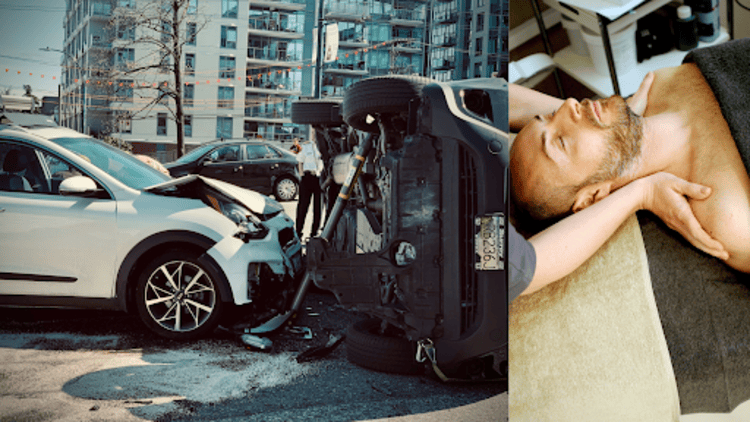How Massage Therapy Aids Car Accident Recovery In East Gwillimbury?

According to recent research of 2025, the Ontario Provincial Police (OPP) have reported 80 fatal collisions across the province, including in regions near East Gwillimbury. The OPP continues to emphasize road safety and targets reckless driving to reduce accidents. Despite these efforts, many people in East Gwillimbury face injuries from car accidents and seek effective ways to support their recovery.
One therapy that is growing in popularity among accident survivors here is massage therapy in East Gwillimbury.
But why are so many people turning to this approach?
Let’s explore what massage therapy is, how it works, and why it’s a preferred option for recovery after a car accident.
Why People Prefer Massage Therapy After Car Accidents
Car accidents often result in muscle tension, pain, restricted movement, and stress—problems that massage therapy is well-suited to address. Here’s why many choose massage therapy in East Gwillimbury:
- Non-invasive and drug-free: People want natural ways to heal without relying heavily on medications or surgeries.
- Pain relief and relaxation: Massage reduces muscle tightness and helps release endorphins, the body’s natural painkillers.
- Improved mobility: It helps restore range of motion by reducing stiffness and swelling.
- Mental wellness: Recovering from an accident can be stressful. Massage soothes anxiety and promotes relaxation.
- Personalized care: Registered massage therapists tailor each session based on the individual’s injuries and comfort levels.
What Is Massage Therapy?
Massage therapy involves the manipulation of soft tissues—muscles, ligaments, tendons, and connective tissue—using hands, fingers, elbows, or specialized tools. The goal is to promote healing, reduce pain, and enhance physical function.
There are different types of massage techniques, including:
- Swedish Massage: A gentler option, Swedish massage helps relax the body and improve circulation, providing relief for those experiencing mild pain or tension after an accident.
- Deep Tissue Massage: This technique uses slow, deliberate strokes to target the deeper layers of muscle tissue. It is highly effective for individuals suffering from chronic pain or injury-related stiffness.
- Trigger Point Therapy: This method targets specific “trigger points” or muscle knots that are often the result of car accidents. Trigger point therapy can relieve localized pain by releasing tension from the muscles.
- Myofascial Release: Myofascial release focuses on relieving tension in the connective tissues (fascia) surrounding muscles. It’s particularly useful for addressing stiffness and tightness caused by car accidents.
Each technique may be used alone or combined, depending on the patient’s needs.
How Is Massage Therapy Done?
Here’s what you can expect during a typical session for car accident recovery:
- Initial assessment: The therapist discusses your accident, symptoms, medical history, and goals.
- Treatment plan: A tailored therapy plan is created, which may involve weekly or bi-weekly sessions.
- Session process: You may lie on a massage table, and the therapist will apply oils or lotions and use various strokes and pressure points on affected areas.
- Follow-up: Progress and pain relief are monitored, and the plan is adjusted as needed.
Sessions typically last 30 to 60 minutes and provide both physical relief and mental comfort.
Recovery Benefits Specific to Car Accident Injuries
Massage therapy supports recovery by:
- Reducing muscle spasms and cramps caused by sudden impact.
- Enhancing blood flow to speed healing in injured tissues.
- Lowering inflammation and swelling in affected areas.
- Breaking down scar tissue for better mobility.
- Decreasing headaches and neck pain from whiplash injuries.
- Improving posture and muscle balance to prevent further injury.
Aftercare and Safety
Proper aftercare after massage therapy includes:
- Drinking plenty of water helps flush out toxins released during a massage.
- Avoid strenuous activities on treatment days.
- Use heat or ice packs as recommended.
- Communicating openly with your therapist about pain or discomfort.
Always choose a licensed and experienced massage therapist in East Gwillimbury who understands car accident recovery.
Final Thoughts
With the rising number of car accidents reported by the OPP, finding effective recovery methods is crucial. Massage therapy in East Gwillimbury offers a holistic, non-invasive way to heal physically and mentally after an accident. Its personalized approach makes it a trusted choice for many residents seeking long-lasting relief and improved quality of life.
If recovering from a car accident, consider exploring massage therapy as part of your treatment plan. It could be the key to a smoother, faster recovery.
For more information visit us : articlepoint.org

Comments are closed.